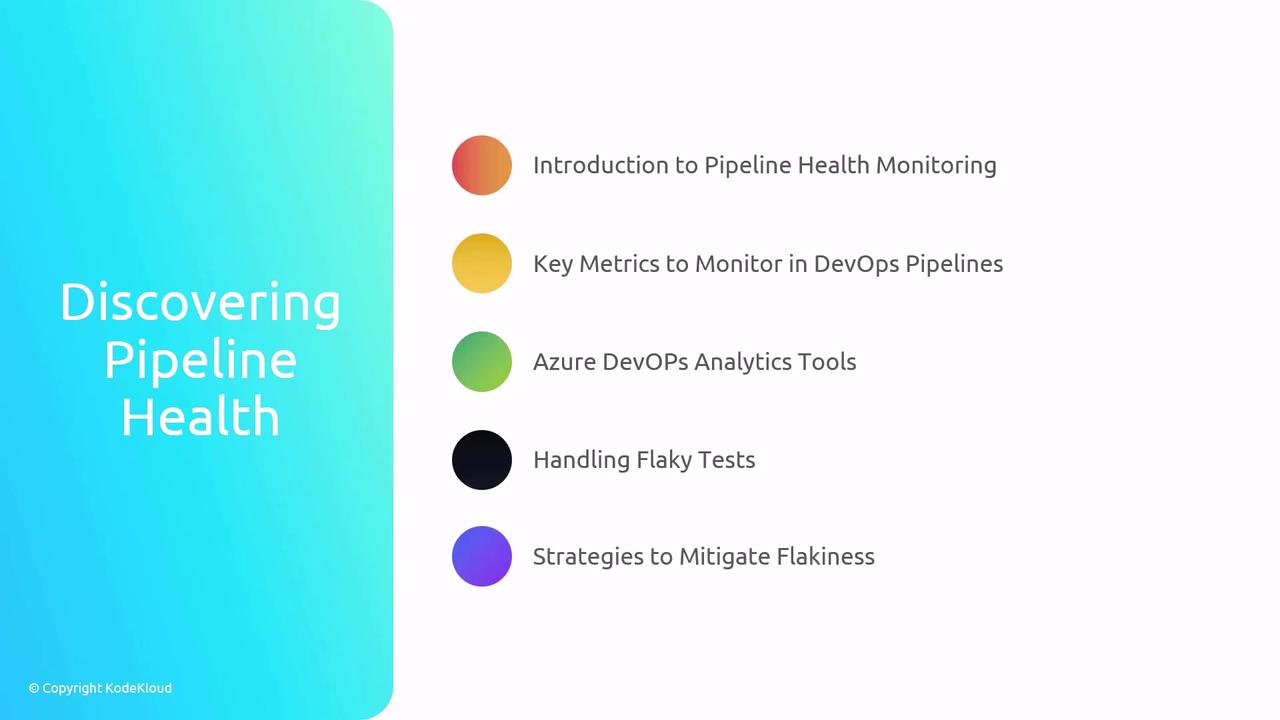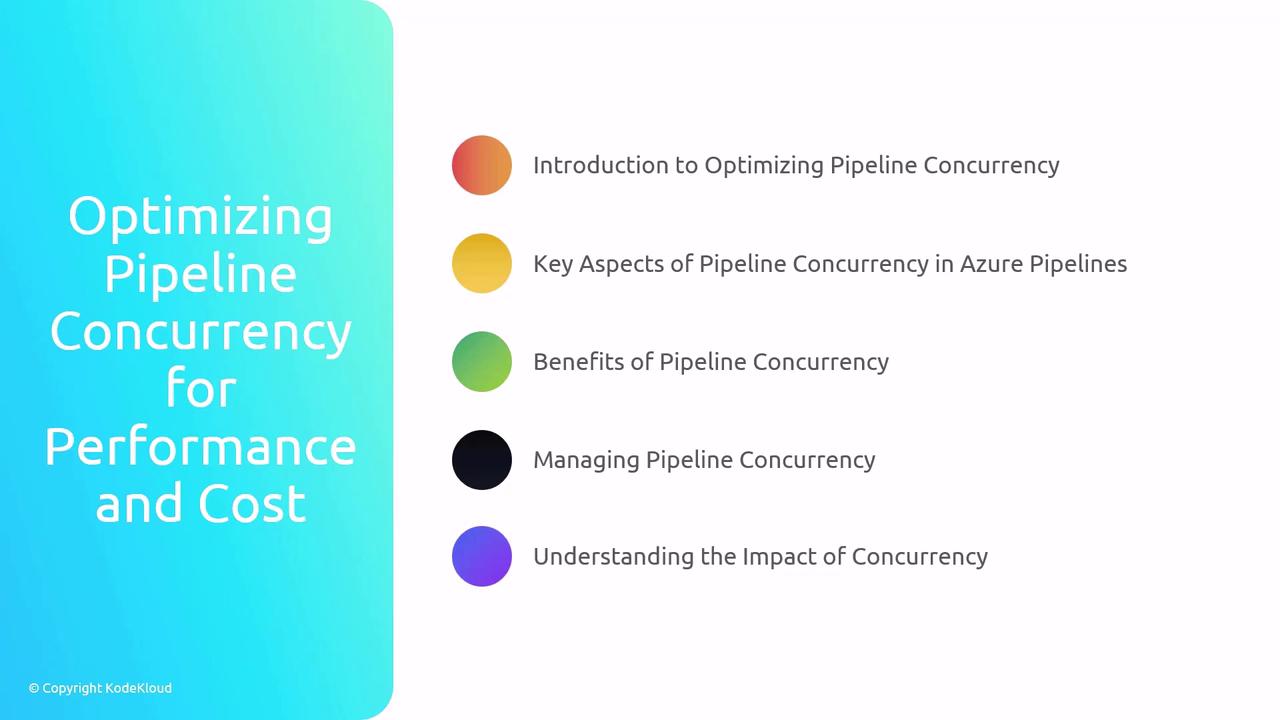AZ-400: Designing and Implementing Microsoft DevOps Solutions
Maintain Pipelines
Summary Maintaining Pipelines
Welcome to the concise review of pipeline health, optimization, and migration in Azure DevOps. This summary will reinforce the key concepts you need for the AZ-400 exam and real-world DevOps practices.
1. Discovering Pipeline Health
Pipeline health ensures reliable, predictable releases. Focus on tracking the right metrics and using Azure DevOps analytics tools.
Key Metrics to Monitor
| Metric | Description | Example Threshold |
|---|---|---|
| Build Success Rate | Percentage of successful builds | ≥ 95% |
| Test Pass Rate | Ratio of passed vs. total tests | ≥ 98% |
| Mean Time to Repair | Average time to fix a broken build or test | ≤ 30 minutes |
| Flaky Test Count | Number of tests that intermittently fail | 0 |

Analytics Tools in Azure DevOps
- Azure DevOps Dashboards: Custom charts and widgets for real-time insights.
- Analytics Views & Widgets: Prebuilt reports on build trends and test outcomes.
- Azure Test Plans:
- Organize, execute, and track test suites.
- Integrates seamlessly with CI/CD to isolate flaky tests.
Note
Use Azure Test Plans to tag and quarantine flaky tests. Consistent test results improve confidence in your releases.
2. Optimizing Pipeline Concurrency
Concurrency controls how many jobs or tasks run in parallel. Proper tuning accelerates delivery and reduces costs.

Concurrency Concepts
| Feature | Purpose | Example |
|---|---|---|
| Parallel Jobs | Run multiple stages or jobs simultaneously | pool: vmImage: 'ubuntu-latest' |
| Agent Pools | Share agents across teams for better utilization | Create dedicated pools for high-priority jobs |
| Concurrency Limits | Prevent overload and control spending | maxParallel: 4 in YAML |
Sample YAML Snippet
jobs:
- job: Build
pool:
name: 'Default'
demands:
- ubuntu
strategy:
parallel: 3 # Run 3 agents in parallel
maxParallel: 3
steps:
- script: npm install
- script: npm run build
Note
Limiting maxParallel helps avoid agent contention and unexpected billing spikes.
Continually monitor queue times and agent utilization to adjust your concurrency settings.
3. Migrating Pipelines from Classic to YAML
YAML pipelines offer versioning, flexibility, and better collaboration. Follow a structured checklist for a seamless migration.

Classic vs. YAML Comparison
| Aspect | Classic Pipelines | YAML Pipelines |
|---|---|---|
| Definition Storage | GUI-based | Code repository |
| Version Control | Limited | Full Git history |
| Extensibility | UI Extensions | Custom templates and parameters |
| Collaboration | Manual export/import | Pull requests, code reviews |
Pre-Migration Checklist
- Inventory existing Classic pipelines and variable groups.
- Identify custom tasks or extensions.
- Review environment configurations and security permissions.
Step-by-Step Migration Process
- Create initial YAML file
- Export existing pipeline settings as reference.
- Reproduce Classic settings
- Define pools, variables, triggers, and tasks in YAML.
- Validate incrementally
- Run small sections of the pipeline using
az pipelines run.
- Run small sections of the pipeline using
trigger:
branches:
include:
- main
variables:
- name: buildConfiguration
value: Release
jobs:
- job: BuildAndTest
pool: 'azure-pipelines'
steps:
- task: DotNetCoreCLI@2
inputs:
command: 'build'
projects: '**/*.csproj'
- task: DotNetCoreCLI@2
inputs:
command: 'test'
projects: '**/*Tests.csproj'
Warning
Watch for YAML indentation and syntax errors. A single space can break your pipeline!
By mastering pipeline health metrics, optimizing concurrency, and migrating Classic to YAML pipelines, you'll be fully prepared for the AZ-400 exam and ready to enhance your organization’s DevOps workflows.
Links and References
Watch Video
Watch video content